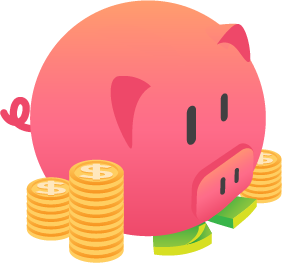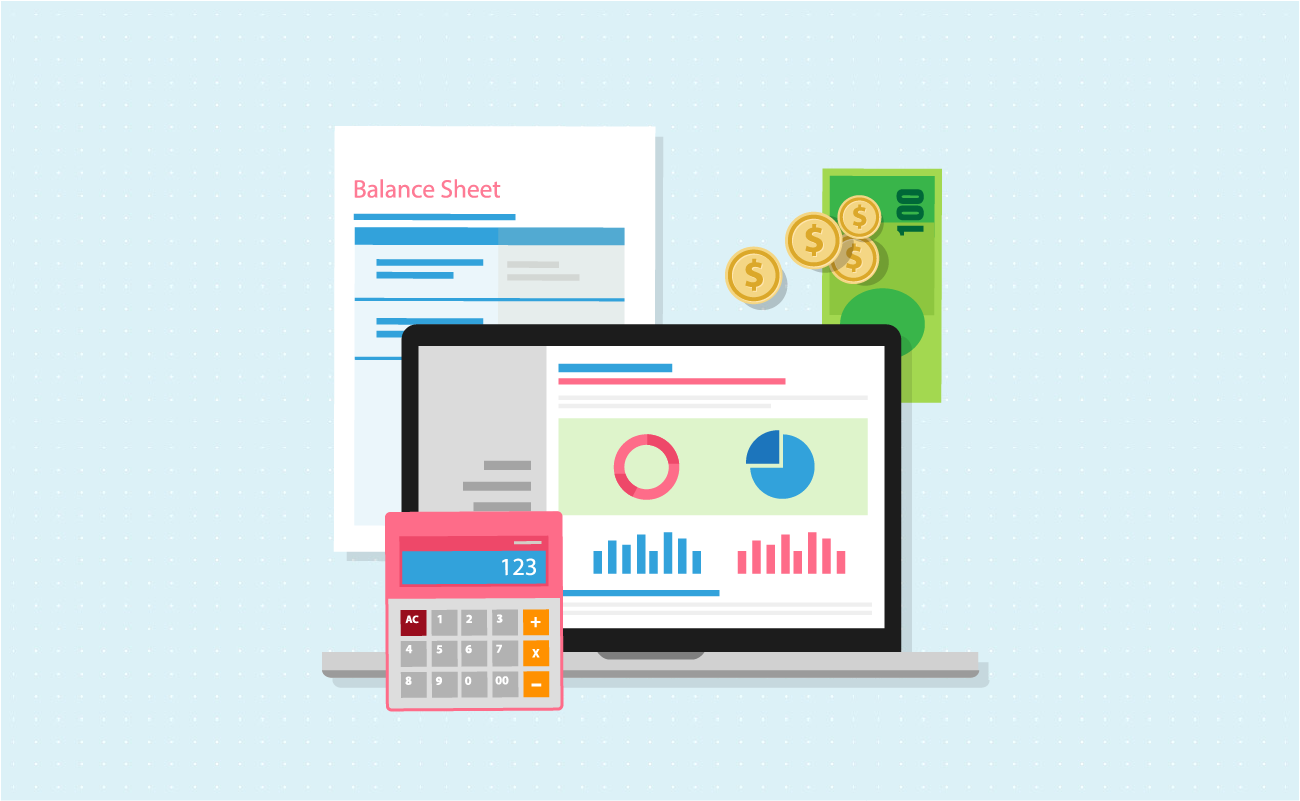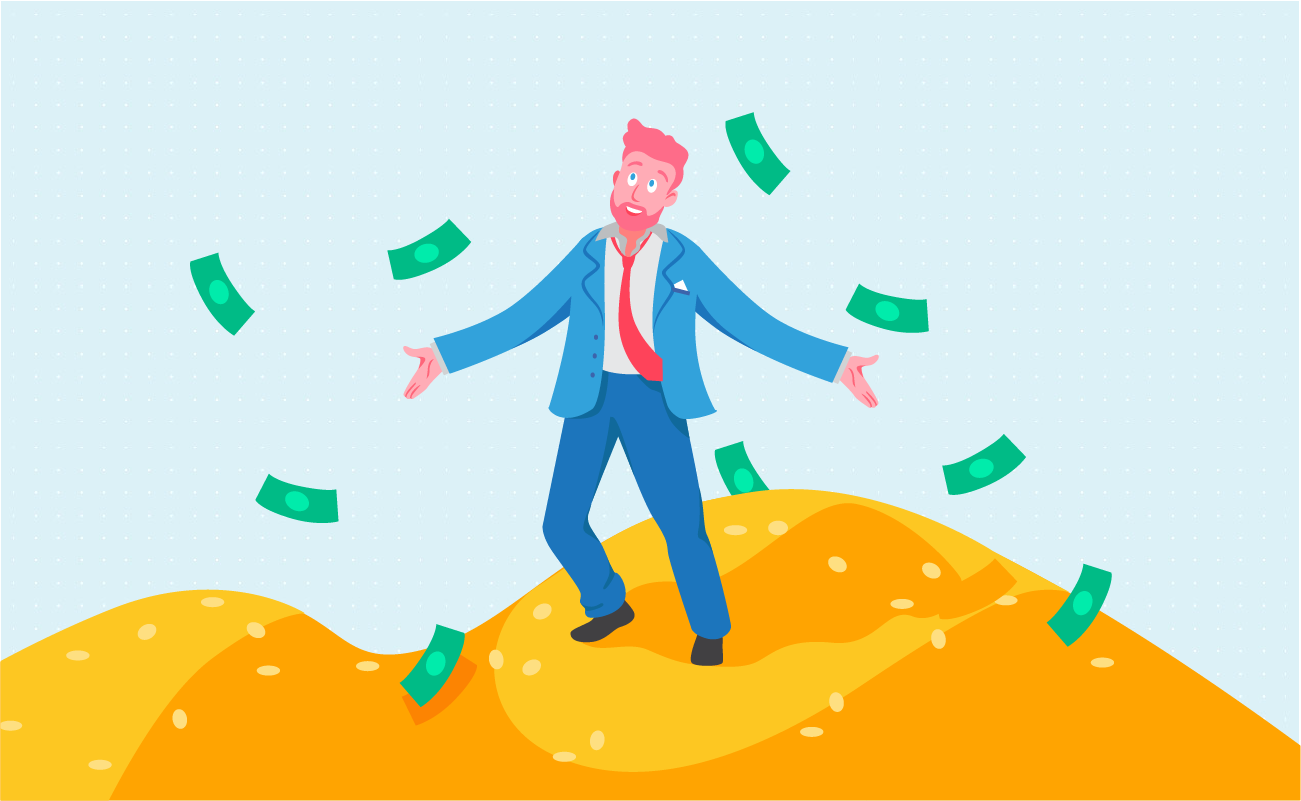 Cash Flow Calculator
Cash Flow CalculatorSince cash inflows and outflows vary in amounts and intervals it can often get quite confusing in trying to figure how much we can afford to spend or save during any given month. Just because you have left over cash this month doesn't mean it's actually available for spending.
This calculator was designed to convert all inflows and outflows into their monthly equivalents making it easier to see how much you can really afford to spend during any given month. And because your household is just as much a business as any traditional business, the various sections of the calculator have been set up in the same way most businesses would set up their cash flow worksheet.
Starting at the top and working your way down, complete and calculate the cash flows for each of the six sections. Once you've computed the entire worksheet, including the Cash Flow Summary, you can then go back and edit your entries. Once you're comfortable with your Cash Flow Forecast you can then click on the "Create Report" button at the bottom of the worksheet. This will create a condensed report in a new window that you can print out and refer to when creating your spending plan.
Navigation: Instructions / Inflows / Administrative / Personnel / Transportation / Residential / Entertainment / Totals
Example cash inflow accounts: Your Job / Spouse's Job / Second Job / Business Revenues / Spouse's Business / Interest & Dividends / Rental Income / Cash Gifts / Gambling Winnings / Rummage Sale / Tax Refund
Guide published by Jose Abuyuan on February 1, 2020

To keep running, a business must make more money than it costs to operate. The business must also have surplus cash flow that exceeds its expenses to expand. Otherwise, it is doomed to close. The same principle applies to your household. You go into debt or become insolvent when you lose more money than you bring in.
Even if you make enough money to break even, it wouldn't be enough for very long. Living paycheck to paycheck is a stressful proposition that leaves you vulnerable. You'll need to improve your cash flow to achieve your life goals.
Thus, you need to refine your budget to maximize your cash flow. Make it your goal to have more money come in than what goes out. The money that accumulates would lay the foundation for wealth building.
It pays to take cues from businesses when it comes to planning your financial future. A business' primary financial concern, after all, is to stay in the black. Many of the world's richest entrepreneurs understand the importance of cash flow. They apply these same business habits in their daily lives. To stay solvent and build wealth, you need to make similar financial decisions.
Businesses use a variety of ledgers to keep track of their expenses and earnings. This is the foundation for other financial documents. Your home cash flow statements follow a similar principle, though they don't go to the same level of detail.
These cash flow statements can be confused with the actual process of budgeting. Although they are complementary, they are far from identical. Cash flow statements tally your income and expenses, like how ledgers track assets and liabilities in a business. You build your budget based on their data. These tables are itemized and detailed, whereas budgets can be more general.
A business that is unprofitable closes. The worst a household can get from a financial standpoint is bankruptcy. Households are different, however, in that finances are not the only things at stake.
The emotional toll that poor finances can leave is staggering. Families chafe under these conditions. You and your spouse may come into conflict if you don't resolve the issue together. Your children's future may be jeopardized in the process. The stress of being poor can also leave a lasting impact on your physical and mental well-being.
As simple as it sounds, basic financial planning is a high stakes game. The consequences of poor finances can be steep for families. You owe it to your loved ones to keep your finances in good standing.

Examine your cash flow statements carefully. How much money is coming into your household? Is it enough to cover your expenses? How much do you have left over? Where is this money going? Where should this money be going? All this information is crucial in creating a budget plan that works for you.
The goal is simple. You should ensure that more money flows in than out. Knowing where your money goes can also help you determine where your extra cash should and shouldn't go. As a rule, you should always focus on paying immediate necessities. When you're starting out, the first thing you need to expand should be your emergency fund. If you have debt, consider paying it down.
Reconsider anything extraneous, especially when you're in a financial bind. Ask yourself this question: “Do I really need this?”
It's tempting to use the extra money you gain from positive cash flow as savings. However, that's not how it's supposed to work. Prudent entrepreneurs don't keep all their profits for spending. They live off a salary while reinvesting their money on growing their business. Your budget should do likewise.
Defining savings as the money remaining after expenses is a common rookie mistake. To stabilize your finances in the long run, it should be the other way around. Your savings should be a dedicated part of your budget, equal in importance to necessary expenses. This will serve as the foundation for wealth-building investments in the future.
People have known for centuries that saving during prosperous times is good practice. Money you stash away in the good times can help you through a lean period without breaking the bank. Your initial goal is to save up for these funds for contingencies. The most important of these should always be treated as necessities.
Chief among these contingencies is the emergency fund. This money could be your family's only lifeline when disaster strikes. When planning a budget for the first time, your first major goal is to carve out a room for emergency savings. There is no specific end savings goal for your emergency fund. In general, the bigger you make it, the better. To give you a good idea of where to start, try saving up at least half a year's worth of income within your emergency fund.
Other contingency funds include the following:
Contingency funds keep you from relying on lines of credit when you're in a bind. Rather than taking on debt, you pay for everything in cash. Beyond protecting your finances, these funds also give you invaluable peace of mind.
In this example, we will look at the estimated cash flow for a double income family. This chart presumes that your family has a mutual monthly income of $7,850 plus an extra $572 from driving for Uber.
| Income | Yearly Payments | Amount per Payment | Monthly Amount |
|---|---|---|---|
| Your Income | 24 | $2,350.00 | $4,700.00 |
| Your Spouse's Income | 24 | $1,575.00 | $3,150.00 |
| Uber Driving | 52 | $132.00 | $572.00 |
This leaves the family a monthly total of $8,422. The following tables assume that deductions for social security and retirement were made. Be sure to include these as expenses if you haven't deducted them in your income.
For administrative expenses:
| Category | Yearly Payments | Amount per Payment | Monthly Amount |
|---|---|---|---|
| Savings (10 percent) | 24 | $392.50 | $785.00 |
| Emergency Fund | 24 | $40.00 | $80.00 |
| Income Tax | 12 | $1,178.00 | $1,178.00 |
| Health Insurance | 12 | $1,168.00 | $1,168.00 |
| Life Insurance | 1 | $350.00 | $29.17 |
| Cellphone Bill | 12 | $71.00 | $71.00 |
| Internet Bill | 12 | $65.00 | $65.00 |
Notice that we've already included savings in the data above. For the next tables, we assume your family has debt and is also leaving a small amount of money for sinking funds. You might consider putting your savings on hold to pay down your debts faster. The amount of interest you save surpasses any short-term gains and leaves you more money for future savings.
For personal, transportation, and entertainment expenses:
| Category | Yearly Payments | Amount per Payment | Monthly Amount |
|---|---|---|---|
| Food | 24 | $380.00 | $760.00 |
| Clothing | 4 | $200.00 | $66.67 |
| College Loans | 12 | $764.00 | $764.00 |
| Credit Card Bills | 12 | $640.00 | $640.00 |
| Car Loans | 12 | $554.00 | $554.00 |
| Fuel | 12 | $60.00 | $60.00 |
| Car Repair Sinking Fund | 24 | $20.00 | $40.00 |
| Entertainment Sinking Fund | 24 | $50.00 | $100.00 |
| Netflix Subscription | 12 | $15.99 | $15.99 |
For property and utilities expenses:
| Category | Yearly Payments | Amount per Payment | Monthly Amount |
|---|---|---|---|
| Mortgage | 12 | $1,570.00 | $1,570.00 |
| Property Tax | 1 | $700.00 | $58.33 |
| Power | 12 | $118.00 | $118.00 |
| Water | 12 | $70.00 | $70.00 |
| Gas | 12 | $54.00 | $54.00 |
| Home Insurance | 1 | $1,445.00 | $120.24 |
| Home Maintenance Sinking Fund | 24 | $10.00 | $20.00 |
Taken together, your cash outflow would come to $8,387.57, leaving you with a modest surplus of $34.43. Here are a few good ideas to use the money:
The tables depict a balanced budget. This equilibrium is ideal for the short term since it already has provisions for savings. But if you really want to build wealth, you must tip the scales to your favor. Your next priority in the budget is to increase cash flow, which you can do on either end of the pipeline.
The first major decision you can make toward tipping the scales is to cut out debt. The above example is well on its way toward that. It has dedicated a large sum toward eliminating credit card bills. This frees $600 in extra money, which can be used to pay off the other debts much quicker.
This adds up over time. Removing those debts frees $2,000 in the statements above. This is more than enough money to bump up the savings above 20 percent. That money can also be put to use for other financial goals, such as a college education fund for the kids.
Most budgets focus on trimming unnecessary expenses. You'd be surprised at how many things you can cut back on without feeling the crunch. Far too many people pay for things they shouldn't be paying for. Many of these include hidden fees and redundant bundles from telecom providers. Search through your bills and see what you can trim away. Letting go of some extraneous expenses is a liberating experience.
Sometimes, though, you must cut in deeper. This isn't always an attractive option for everyone. Some expenses can feel so integral to your lifestyle that you'd feel deprived without them. However, in dire times, you'd have no choice but to bite the bullet in the interim.

The example above describes a household that does ride-sharing services as a side job. Today, there are many hourly freelance jobs you can do over a lazy weekend. These aren't the only ways to increase your money on the side:
Many of the world's richest people have multiple revenue streams, most of which are passive. Make it one of your goals to follow them by having passive income sources of your own. Invest your savings wisely once you can afford it.
People pay more taxes than their fair share. Reduce the impact of life's other certainty by lessening the amount of taxes you pay in the first place. Work with an accountant to find exemptions and incentives to help dial down your tax burdens. You could wake up to a larger take-home pay once you're done.
This permanent reduction may see the end of your annual fat tax returns, but that isn't a true loss. All you did was loan that money without interest to Uncle Sam. Put that money to better use in a high interest savings account or your retirement fund. Or you can put it to work paying expenses or debt right when you need it.
Credit cards are convenient, user-friendly, and filled with dire consequences. If you're wondering why you still have this forbidden fruit of personal finance, you might be on to something. It might wise to cut out your credit card use while you pay down debts.
Our site has other pages that discuss the matter of credit cards at length. We also have an assortment of resources to help you get out of credit card debt.
Credit cards make a tenuous line of emergency credit. Unlike when you pay in cash, you end up with enormous debt that you must pay back. In the aftermath of an emergency, this can be disastrous.
In addition, credit cards make terrible bridge funds. You might find yourself dedicating a large amount of money to pay off your credit card to avoid interest. Playing the float might not always be a good option.
When paying for smaller expenses, however, a credit card can be a convenient lifesaver. If these expenses do not exceed your budget, you have little to worry about.
There is a natural tendency for people to live within their means. As your income grows, you make shifts in your lifestyle to use the extra money. This likely happened without you noticing. People in their fifties often live lifestyles they couldn't even dream of in their twenties. If you're one of these people, good job!
When guided by budgeting, this gradual lifestyle creep will not do harm. Everyone wants to live the life they can afford, after all. However, you shouldn't let this tendency grow unchecked. Eventually, you might start living a lifestyle you can't afford.
Moreover, you may neglect to grow your savings along with your lifestyle. Without growing your contributions, you miss out on opportunities to build wealth exponentially. In addition, your living expenses outpace your emergency funds. This may put you in a bind when you lose your source of income. Your retirement income may also be imperiled if your funds did not grow with your lifestyle expectations.
Use your extra money responsibly. As your cash flow grows, focus on your financial objectives. If your goal is to be debt-free, use it as extra payments for any of your outstanding debts. Once that's done, decide carefully where you want your extra money to go.
Your future financial goals would lay the foundation for everything else to come. Have a clear vision of what you want with your money. Do you want to bolster your retirement savings? Build your portfolio? Prepare for your children's college expenses? Be a millionaire? All of the above?
Finally, live a little and pay yourself. While you should always look ahead for the future, it also doesn't hurt to splurge a bit on the here and now. What is it that you really want? Can you pay for it out of pocket? The ideal allocation gives you a little more room to enjoy yourself while you build up a fortune.
Want to plan early for a comfortable retirement? Use our retirement calculator.
Jose Abuyuan is a web content writer, fictionist, and digital artist hailing from Las Piñas City. He is a graduate of Communication and Media Studies at San Beda College Alabang, who took his internship in the weekly news magazine the Philippines Graphic. He has authored works professionally for over a decade.